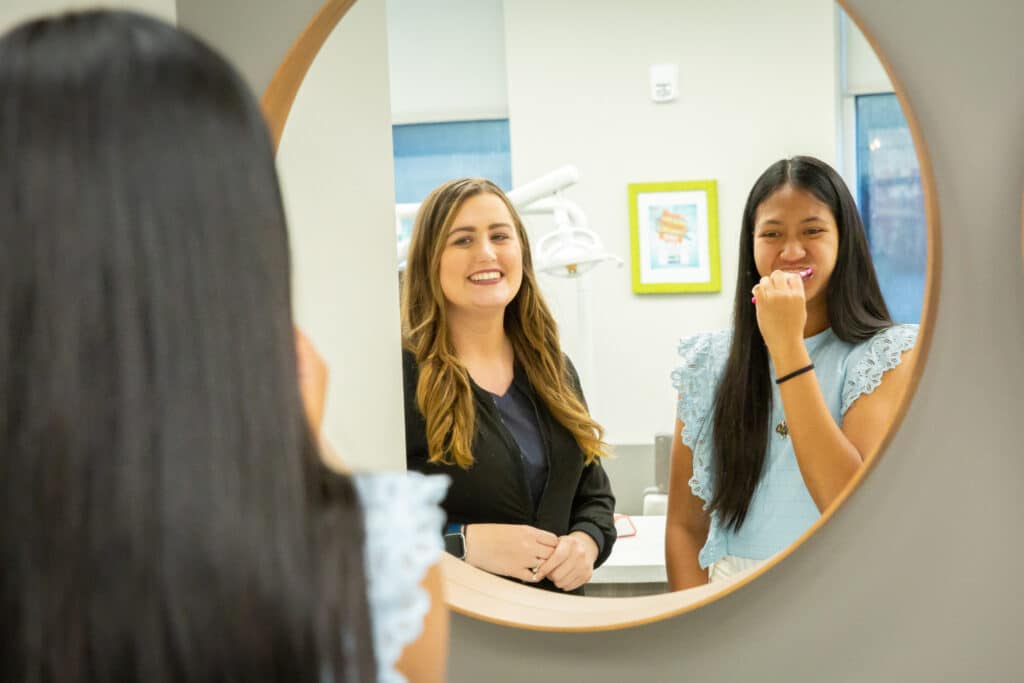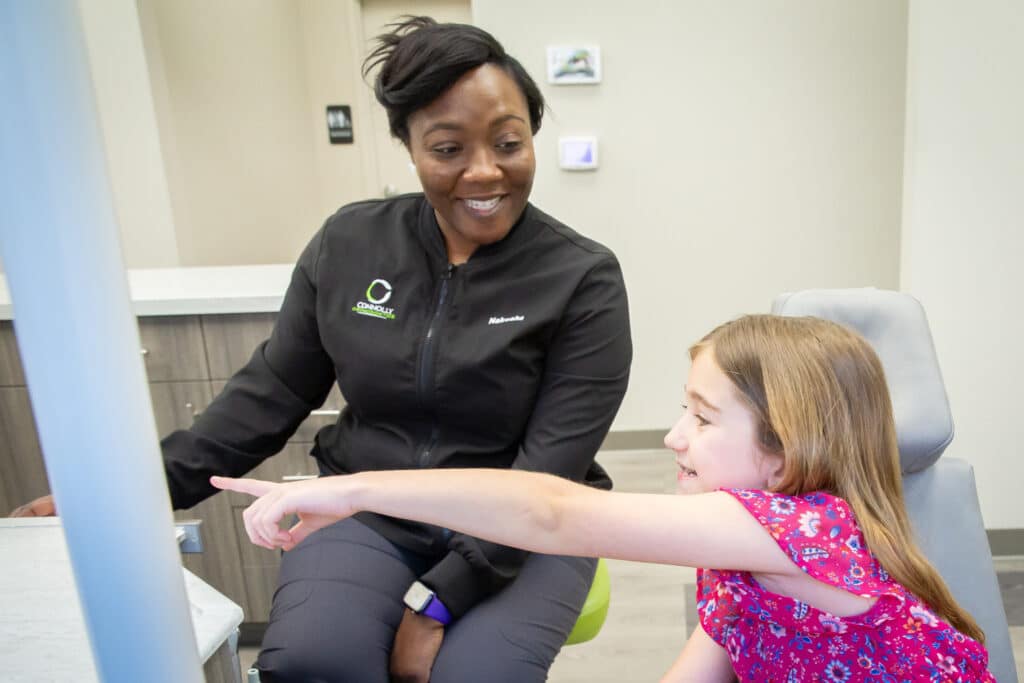Brushing and flossing are important anytime, but they’re essential during treatment with braces. Food can get trapped easily around brackets and underwires, leading to tooth discoloration and food decay. That’s why it’s so important to keep up excellent oral hygiene. The key isn’t just to brush and floss; it’s to brush and floss CORRECTLY with braces.
The team at Connolly Orthodontics wants you to have the best treatment possible. We’re happy to show you the best techniques for brushing and flossing while in the office. We can also suggest the best tools to brush and floss properly during and after braces.

Flossing may be the trickiest thing to do with braces. It was difficult enough getting that waxy string between your teeth, but NOW you have to get it around brackets and wires? How do you do that?
It’s not as hard as it may seem with the right tools!
Floss threaders are thin pieces of plastic that look like needles with giant eyes. The idea is to thread the floss through the eye, then use the floss threader to go under the braces wire and through your teeth for proper flossing. It may take a bit more time, but it’s worth it!
Many patients use water flossers with braces because they find them faster and easier than flossing with floss threaders. Water flossers, such as a Water Pik, can get food out from between teeth and can be used to get food out from around brackets and underwires.

Brushing with braces can be a little more complicated than without braces. Using the right tools can make it a lot easier and ensure your teeth stay clean and healthy throughout your treatment.
It’s always good to use a soft-bristled brush while brushing your teeth. Stiff bristles can irritate your gums. Using a soft-bristled brush with braces is vital because harder bristles can damage your brackets or wires. It’s perfectly OK to use an electric toothbrush, as long as it has a soft-bristled brush head. In fact, an electric toothbrush can give you a better cleaning than doing it manually. So, attach a soft-bristled brush head and brush away!

A fluoride mouthwash can provide an extra bit of protection for your teeth. The liquid gets around your brackets and wires easily to get a nice fluoride coating all over your teeth. The extra fluoride can strengthen your enamel — the hard outer shell of your teeth — and prevent discoloration from the loss of minerals around your brackets. That discoloration usually occurs when the patient neglects proper oral hygiene. Proper flossing, brushing, and a good fluoride mouthwash rinse can prevent tooth discoloration during braces.
All of these factors are important in great oral hygiene, but the timing of each one is just as important. You want to floss BEFORE you brush. Why? Because then you can brush away the food particles you just got out from between your teeth. Otherwise, you’ll clean your teeth, then get them dirty again as you floss. Gross!
Another vital bit of timing: Take half an hour. What does that mean? Take half an hour after brushing or rinse with a fluoride mouthwash to let the fluoride take effect. Any eating or drinking will wash the fluoride away. By waiting half an hour, your saliva will react with the fluoride and allow it to strengthen your enamel. So remember — take half an hour and let that fluoride do its job!